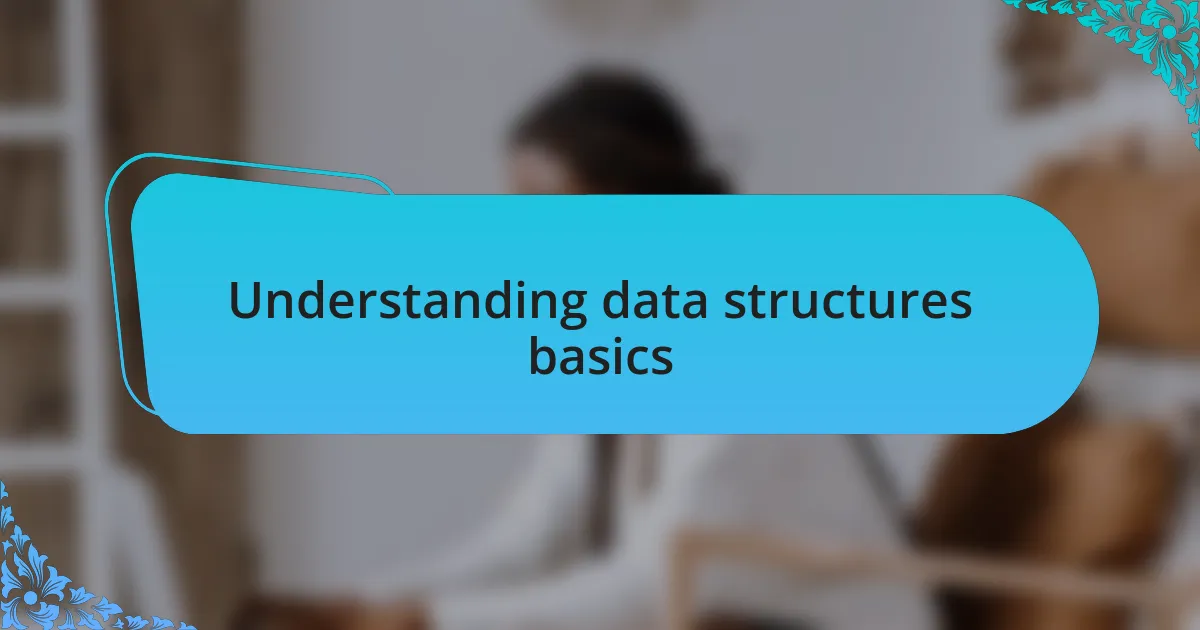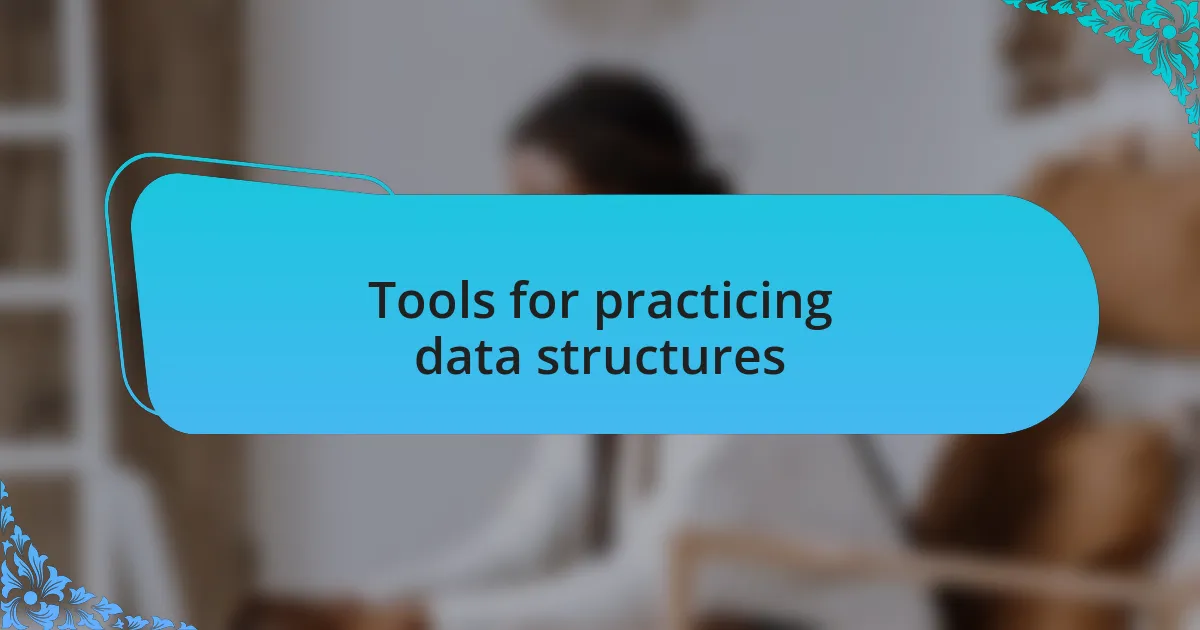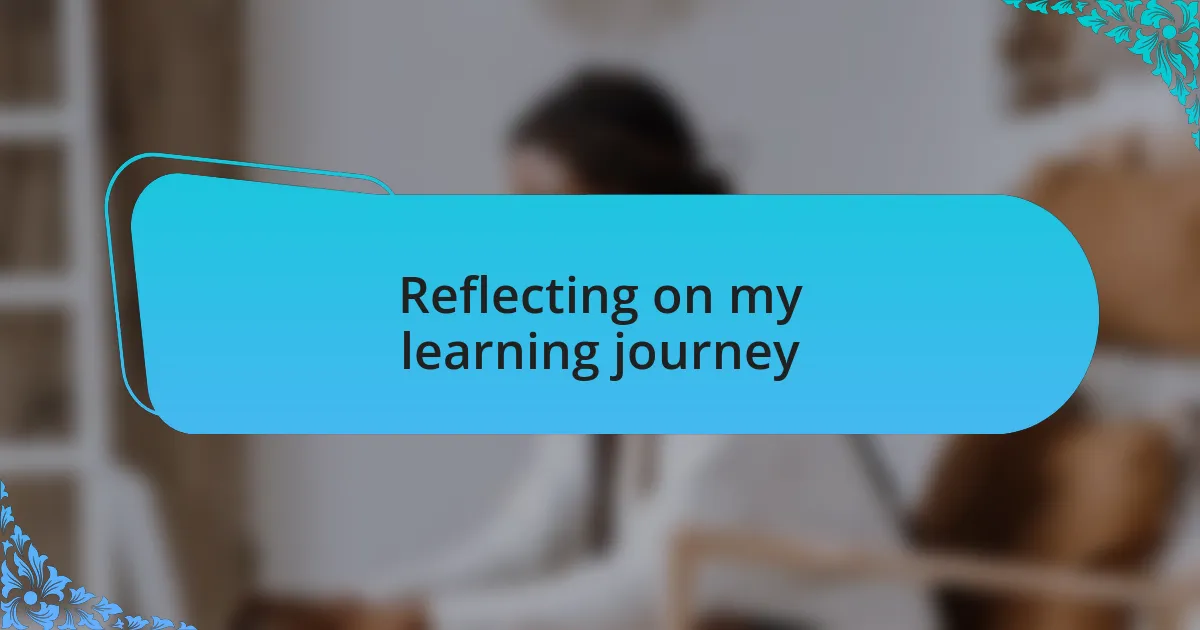Key takeaways:
- Choosing the right data structures significantly enhances code performance and efficiency.
- Interactive learning resources, like online courses and programming forums, foster understanding and community engagement.
- Practical tools like coding platforms and visualization software help solidify comprehension and skills in data structures.
- Persistence through challenges leads to a deeper connection and mastery of data structures, enriching the learning experience.

Understanding data structures basics
Data structures are the backbone of efficient programming. When I first encountered them, I felt overwhelmed by the variety of structures like arrays, linked lists, and trees. It’s easy to wonder, why should I care about the differences? The truth is, the right choice can improve performance, drastically reducing the time my code takes to run.
As I navigated these concepts, I found it helpful to visualize how each structure operates during a process. For example, using a stack for reversing a string seems simple, yet understanding how it literally “pops” elements showcases its functionality vividly. Moments like this sparked a sense of connection to the material; I began to see data structures not just as abstract concepts but as tangible tools that enable me to solve real problems.
Reflecting on my learning process, I remember struggling with binary trees. The recursive nature was daunting. Why didn’t it click initially? Maybe it was the nested complexity. However, through patience and lots of practice—like drawing tree diagrams or writing small algorithms—I started to appreciate their elegance. These experiences highlighted the importance of persistence in mastering the basics of data structures.

Learning resources for data structures
When I embarked on learning data structures, I found that selecting the right resources was crucial. I turned to online platforms like Coursera and edX for structured courses, which guided me step-by-step through complex topics. The interactive exercises offered by these platforms made concepts like queues and graphs feel less intimidating and much more approachable.
Books also played a vital role in my journey. I recall diving into “Data Structures and Algorithms Made Easy” during long commutes. Each chapter unraveled challenges and provided practical examples that I could envision implementing in real-life scenarios. As I read, I often found myself excitedly sketching out ideas and algorithms in my notebook, reinforcing what I was learning.
Another valuable resource for me was participating in coding forums like Stack Overflow and Reddit’s r/programming. Engaging in discussions and asking questions helped cement my understanding and revealed diverse approaches to problem-solving. Have you ever experienced that “aha” moment when a stranger on the internet shares a perspective that suddenly clicks? These interactions not only expanded my knowledge but also fostered a sense of community in my learning process.

Tools for practicing data structures
When it comes to practicing data structures, I’ve found that utilizing coding platforms like LeetCode and HackerRank is incredibly effective. The range of problems available, especially those categorized by data structures, allows you to apply what you’ve learned in a hands-on way. I still remember the satisfaction I felt after solving my first array manipulation problem—there’s just something exhilarating about coding your way to a solution.
Another tool I can’t recommend enough is Visualgo. This interactive visualization tool brings data structures to life, allowing you to see how algorithms execute in real-time. My first encounter with it was during a late-night study session; watching a binary tree being traversed step-by-step changed my understanding entirely. It made the concept feel tangible instead of just abstract code on a screen. Have you ever watched your code transform into a visual story? It’s a game-changer.
Furthermore, I often turn to GitHub for open-source projects, where I can see diverse implementations of data structures in action. Contributing to a project or even just reading through others’ code has given me a broader perspective on how these structures function in real applications. I recall dissecting a project that used a hash table for caching and marveling at how a simple yet powerful data structure could affect performance. It’s moments like these that truly solidify your learning, don’t you think?

Reflecting on my learning journey
Reflecting on my learning journey, I often find myself thinking about the moments that ignited my passion for data structures. I vividly recall sitting on my couch one rainy afternoon, trying to grasp the differences between stacks and queues. The lightbulb moment came when I was able to visualize their behaviors through my favorite drawing app. It felt so rewarding to map out these concepts, transforming abstract ideas into visual representations that made sense to me.
There were instances when frustration was a constant companion. I remember struggling with linked lists for what felt like an eternity. Each failed attempt seemed to reinforce my doubts about my coding abilities. However, persistence paid off. Once I finally understood how pointers worked, a wave of relief washed over me. It was more than learning a data structure; it was about overcoming a personal challenge—a testament to my growth as a learner.
Looking back, it’s fascinating to see how my approach has evolved. I’ve come to realize that every small success fuels my motivation to tackle the next challenge. Have you ever felt that rush after implementing a stack for the first time and watching it work flawlessly? Those experiences have not only deepened my understanding but have also connected me to a community of like-minded learners eager to share and grow together. Each step in this journey feels like adding a new tool to my coding toolbox, ready to be used when the right opportunity arises.